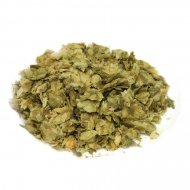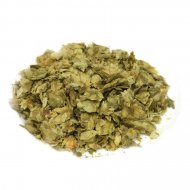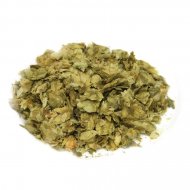Sign up to the Brew Mart newsletter for the latest news, offers & more
Please note that Brew Mart will be closed on Saturday, 5th July, AND Saturday, 12th July. Thank you.

Cones
Hop cones are the flowers brewers use from the hop plant (Humulus lupulus) primarily used in brewing beer. These cone-shaped structures contain various compounds contributing to the beer's flavour, aroma, and bitterness. Hops are a crucial ingredient in the brewing process, as they provide several essential functions: Find out more below.
Hop Cones
Hop cones crucial ingredients in the brewing process
- Bitterness: Hops contain bitter compounds called alpha acids. These acids are released during boiling and contribute to the beer's bitterness. The bitterness helps balance the sweetness of the malted barley and provides complexity to the flavour profile.
- Aroma: Hop cones contain essential oils that give beer its distinct aromas. Depending on the hop variety, these oils can impart floral, fruity, citrusy, piney, spicy, or herbal notes to the beer.
- Flavour: The combination of alpha acids and essential oils contributes to the overall taste of the beer. Hops can add various flavours, from subtle herbal tones to intense fruity or spicy characteristics.
- Stability: Hops have natural preservative properties due to their antibacterial properties. They help extend beer's shelf life by inhibiting spoilage microorganisms' growth.
- Foam Stability: The compounds found in hops aid in creating a stable and creamy foam head on the beer when poured into a glass.
Hop varieties vary in alpha acid content, essential oil composition, and flavour profiles. Brewers often select specific hop varieties or combinations to achieve their beer recipes' desired bitterness, taste, and aroma characteristics. Some popular hop varieties include Cascade, Centennial, Amarillo, Saaz, and Fuggle, among many others.
The timing of hop cone additions during brewing also influences the beer's final characteristics. Hops added early in the boil contribute more to bitterness, while those added later contribute more to flavour and aroma. Additionally, dry hopping involves adding hops directly to the beer after fermentation, enhancing its aroma without significantly affecting bitterness.
Overall, hop cones are a critical ingredient in brewing beer, allowing brewers to craft various styles with varying bitterness, flavour, and aroma.
Hop Leaf
Hop leaves, also known as hop foliage or hop vines, are the green, heart-shaped leaves of the hop plant (Humulus lupulus).
The hop plant is a vine that climbs, it can grow several meters tall, and its leaves are large and palmate with serrated edges.
While the leaves are not used in brewing, they are an essential part of the hop plant's overall growth and contribute to the production of hop cones.
Like hop cones, hop leaves are part of the hop plant and play a role in brewing, although their significance differs.
While hop cones are primarily valued for their bittering, flavour, and aroma properties in beer production, hop leaves are not typically used for these purposes. Hop leaves contain some of the same compounds as hop cones, such as essential oils, but in much lower concentrations. As a result, they do not contribute significant bitterness or aroma to the beer.
Hop leaves, however, do have some uses:
- Tradition and Decoration: In some traditional brewing cultures, hop leaves are used for decorative purposes, often adorning beer glasses or serving trays. They can add an aesthetic touch to the beer presentation.
- Herbal and Medicinal Uses: Like other parts of the hop plant, hop leaves have been used in herbal and folk medicine for their potential sedative and calming properties. They contain compounds with a mild relaxing effect and have been used in teas and herbal preparations for various wellness purposes.
- Crafts and Art: Hop leaves and vines have been used in various skills, including wreaths, home decor, and natural dyes for fabrics.
- Composting: After harvest, hop leaves and other plant material can be composted, contributing to soil health and fertility.
In brewing, the primary focus remains on hop cones, as they contain the concentrated bitterness, essential oils, and flavours that contribute to the beer's unique characteristics. Hop leaves might play a minor role in some creative brewing experiments but are not as central to the brewing process as hop cones.
Check out An Introduction to Hops with the free PDF download
Download our free guide An Introduction to Hops
























